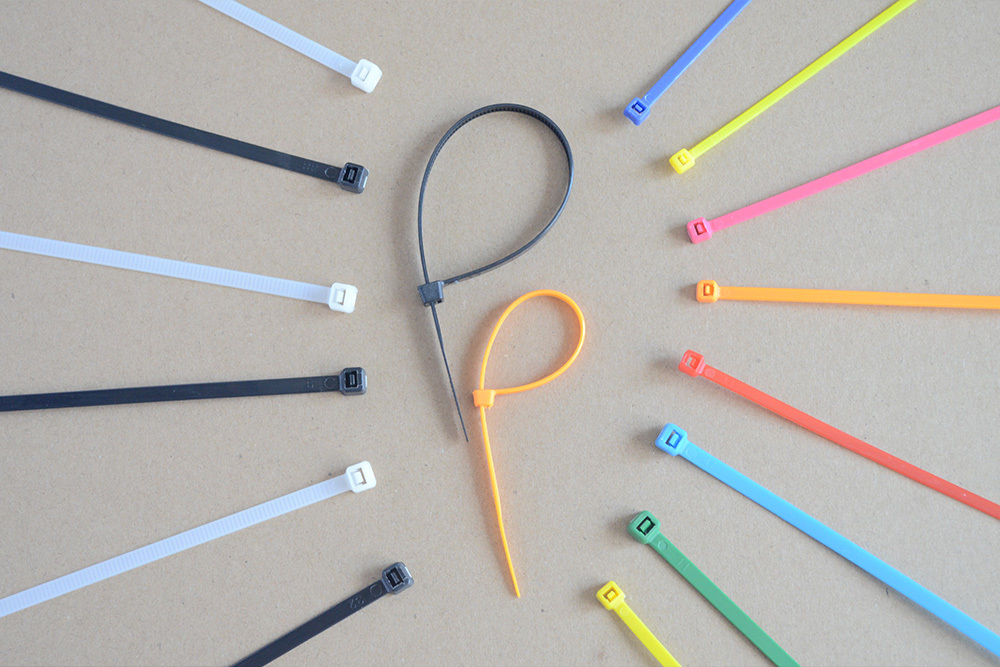24
2025
-
11
Fishbone plastic cable ties with anti-slip design
Author:
Understanding the Anti-Slip Design of Fishbone Plastic Cable Ties
Fishbone plastic cable ties, also known as ribbed or textured zip ties, are engineered to provide enhanced grip and stability in various applications. Their unique design features a series of raised ridges or grooves along the body, resembling the structure of a fishbone, which significantly improves friction and prevents slippage. This design is particularly useful in scenarios where traditional smooth-surfaced ties may fail to maintain a secure hold, such as bundling irregularly shaped objects or securing items in high-vibration environments.
Key Elements of the Anti-Slip Mechanism
The effectiveness of fishbone plastic cable ties lies in their structural innovation. The raised ridges or grooves create multiple contact points between the tie and the object being secured, distributing pressure evenly and reducing the likelihood of loosening. This design also enhances the tie’s ability to grip onto rough or textured surfaces, making it ideal for applications like organizing cables in industrial settings or securing hoses in automotive systems.
Additionally, the spacing and depth of the ridges play a crucial role in the tie’s performance. Wider ridges with deeper grooves offer greater friction, while narrower, shallower ridges may be more suitable for lighter-duty applications. Manufacturers often optimize these dimensions based on the intended use, ensuring the tie provides the right balance of flexibility and strength.
Material Selection for Enhanced Durability
The choice of material further contributes to the anti-slip properties of fishbone plastic cable ties. High-density polyethylene (HDPE) or nylon are commonly used due to their excellent tensile strength, resistance to wear, and ability to maintain structural integrity under stress. These materials also resist environmental factors such as UV exposure, moisture, and chemicals, ensuring the ties remain effective in harsh conditions.
For applications requiring additional durability, some ties incorporate additives like glass fibers or carbon fibers into the plastic matrix. These reinforcements enhance the tie’s rigidity and resistance to deformation, making them suitable for heavy-duty tasks like securing construction materials or bundling large-diameter pipes.
Applications Benefiting from Anti-Slip Design
Fishbone plastic cable ties are versatile tools used across a wide range of industries. In the electronics sector, they are ideal for organizing and securing cables in data centers or server rooms, where loose connections can lead to system failures. The anti-slip design ensures cables remain neatly bundled, even when subjected to vibrations from cooling fans or other equipment.
In the automotive industry, these ties are used to secure hoses, wires, and other components under the hood or in the chassis. The enhanced grip prevents parts from shifting or coming loose during operation, reducing the risk of mechanical issues. Similarly, in construction and manufacturing, fishbone ties are employed to bundle rebar, pipes, or tools, keeping workspaces organized and safe.
Practical Considerations for Optimal Performance
To maximize the effectiveness of fishbone plastic cable ties, users should consider several factors during installation. First, selecting the appropriate size and strength rating for the application is essential. Using a tie that is too small or weak may result in failure, while an oversized tie can be difficult to tighten properly.
Second, ensuring the ridges are aligned correctly with the object being secured can improve grip. For example, when bundling cables, wrapping the tie so that the ridges press against the cable insulation rather than the smooth sides of adjacent cables can enhance stability.
Finally, regular inspection and maintenance are crucial for long-term reliability. Over time, exposure to environmental factors or repeated stress can weaken the tie’s structure. Checking for signs of wear, such as cracks or deformation, and replacing damaged ties promptly can prevent accidents or system failures.
By understanding the anti-slip design of fishbone plastic cable ties and applying these principles in practice, users can achieve secure, reliable fastening in a variety of challenging environments.
plastic cable ties
Hot News
2025-11-26
The relationship between the width of plastic cable ties and their load-bearing capacity
Plastic cable ties are widely used for securing cables, components, or objects, and their load-bearing capacity is a critical factor in determining their suitability for specific tasks. One of the primary influences on this capacity is the width of the tie, which directly impacts its structural strength and ability to withstand tension.
2025-11-26
The advantage of black plastic cable ties in resisting ultraviolet rays
Clear plastic cable ties, known for their transparency and flexibility, offer unique advantages in scenarios where visibility and subtlety are prioritized. Their ability to blend into surroundings while maintaining secure fastening makes them a practical choice across various industries and environments.
2025-11-25
The advantage of black plastic cable ties in resisting ultraviolet rays
Black plastic cable ties are widely recognized for their superior UV resistance, making them a preferred choice for outdoor and sun-exposed applications. The key to their effectiveness lies in their color and material composition, which work together to mitigate the damaging effects of ultraviolet radiation.
2025-11-25
Colored plastic cable ties are distinguished by their colors for different uses
Color-coded plastic cable ties are widely used across industries to streamline organization, improve safety, and enhance efficiency. By assigning specific colors to different purposes, users can quickly identify and manage cables, components, or equipment without relying on additional labels or tools. This system is particularly valuable in complex environments like data centers, manufacturing floors, or construction sites, where dozens of cables or parts must be tracked and maintained.

